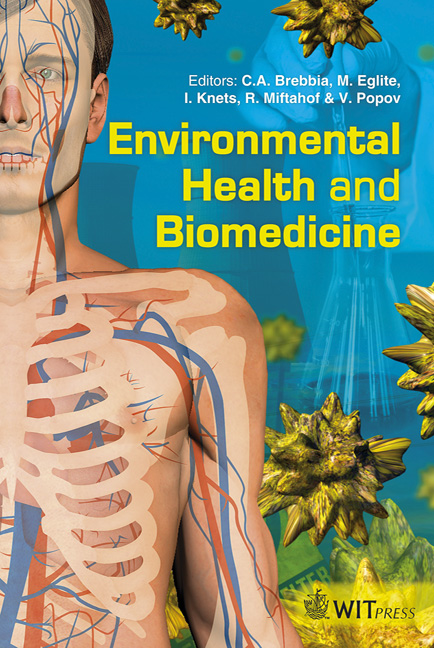Assessment Of Fungal Contamination In A Portuguese Maternity Unit
Price
Free (open access)
Transaction
Volume
15
Pages
7
Page Range
127 - 133
Published
2011
Size
3,542 kb
Paper DOI
10.2495/EHR110121
Copyright
WIT Press
Author(s)
C. Viegas, R, Sabino, C, Veríssimo & L. Rosado
Abstract
A descriptive study was developed to monitor air fungal contamination in one Portuguese maternity. Sixty air samples were collected through impaction method. Air sampling was performed in food storage facilities, kitchen, food plating, canteen, pharmacy, sterilization areas, genecology wards, intensive care unit, operating rooms, urgency and also, outside premises, since this was the place regarded as reference. Besides air samples, forty three samples were collected by swabbing the surfaces using a 10 by 10 cm square stencil. Simultaneously, temperature, relative humidity and particles counting (PM10) were registered. Twenty three species of fungi were identified in air, being the two most commonly isolated the genera Penicillium (41,5%) and Cladosporium (28,4%). Regarding yeasts, only Rhodotorula sp. (45,2%), Trichosporon mucoides (51,6%) and Cryptococcus neoformans (3,2%) were found. Thirteen species of fungi were identified in surfaces, being the most frequent the Penicillium genus (91,6%). Concerning yeasts found in surfaces, four species were identified being Rhodotorula sp. (29,1%) the most frequent. There was no coincidence between prevailing genera indoors and outside premises. Moreover, some places presented fungal species different from the ones isolated outside. In the inside environment, Aspergillus species were isolated in air and surfaces. There was no significant relationship (p>0,05) between fungal contamination and the studied environmental variables. Keywords: air, surfaces, fungal contamination, environmental variables, maternity.
Keywords
air, surfaces, fungal contamination, environmental variables, maternity





